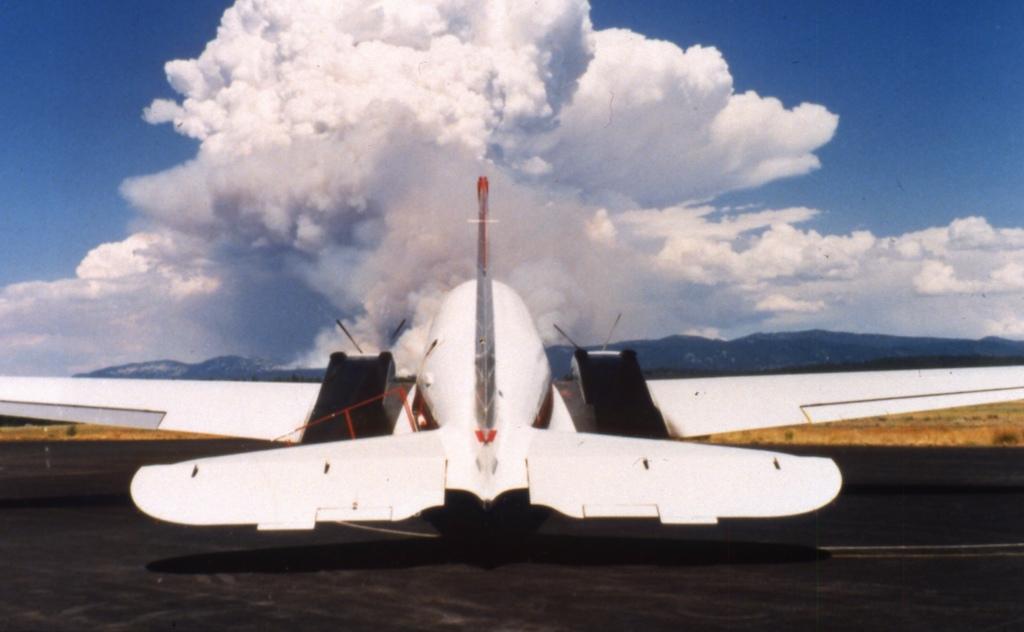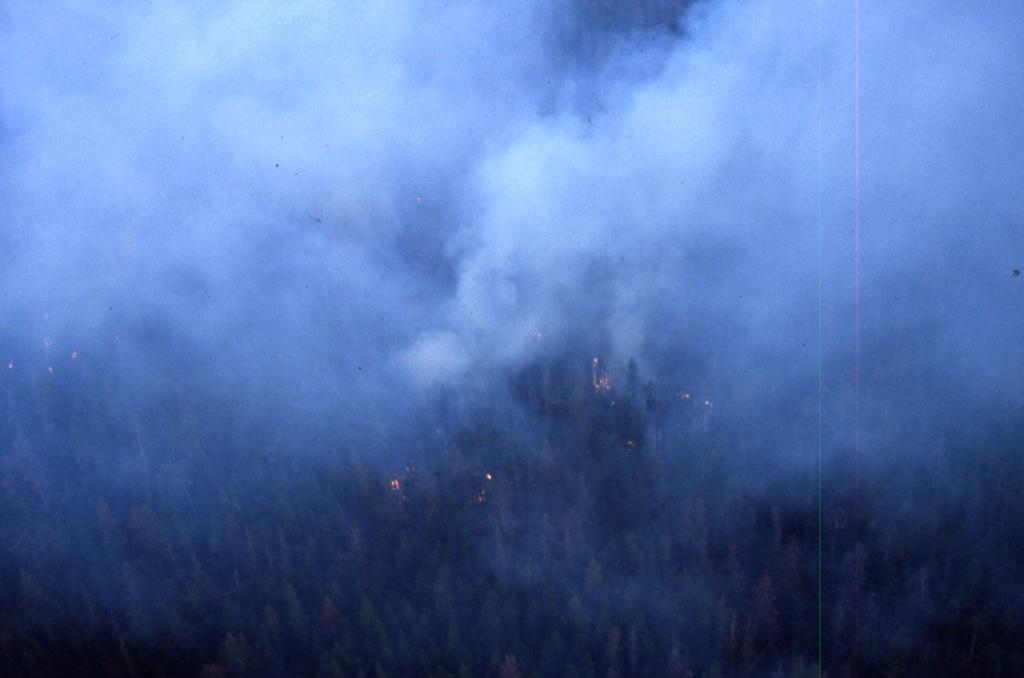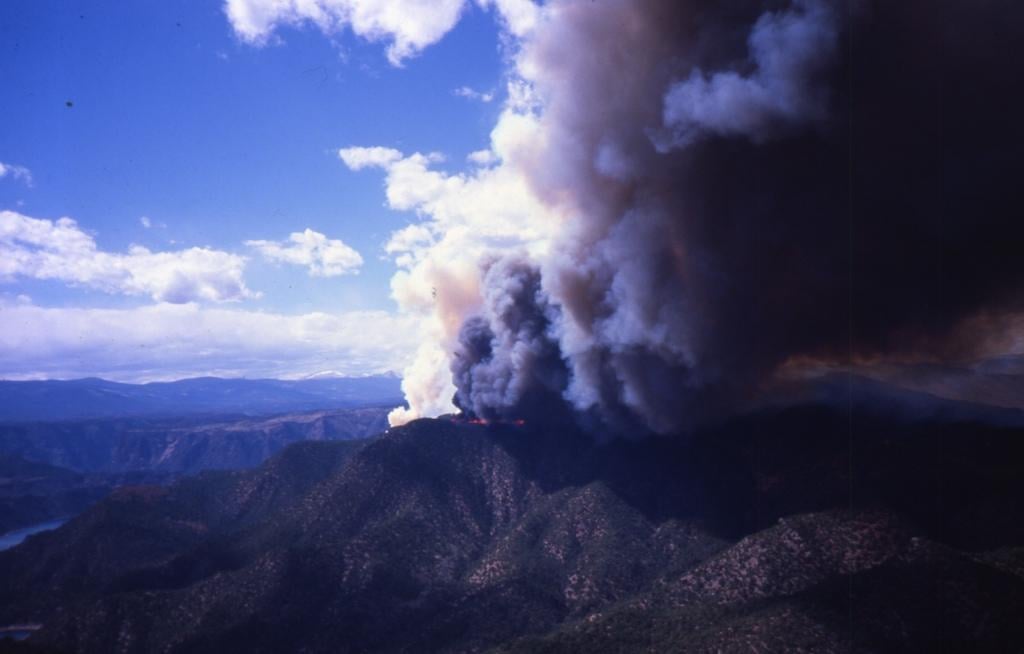
Wildfire smoke can have a significant impact on the efficiency of air traffic operations and contains compounds that are toxic to breathe and damaging to turbine engines.
As of this summer, the wildfire map produced by the National Interagency Fire Center (NIFC) is grim. New headlines couldn’t keep up with the growth of the Bootleg Fire in southern Oregon, which had burned more than 400,000 acres. Drifting wildfire smoke from these conflagrations carried by high-level winds reached the east coast, creating eerie scenes illustrating the far-reaching effects of wildfires. New York City experienced a 24-hour average Air Quality Index of 154, the worst it's been since June 2006, when the AQI was 157.
More than half the U.S. Western states have experienced their largest wildfires on record since 2000. From 1980 to 2010, there was a fourfold increase in the number of large and long-duration forest fires in the American West. Data kept by the NIFC shows that the length of the fire season expanded by 2.5 months, and the size of wildfires increased several fold.
These are momentous changes from my era when flying the elite smokejumpers in the 1990’s. Several of my favorite underlings are now senior pilots within the aerial firefighting profession and their emails from the fire line are head shaking as they fight these larger wildfires during longer fire seasons.
It isn’t just the wildland fire behavior say scientists who are worried about this trend. The U.S. military is also looking at these trends and the effects on its troops and infrastructure. An inter-disciplinary board of Department of Defense personnel from engineering and atmospheric science specialties produced “The Report on Effects of a Changing Climate to the Department of Defense, January 2019.” The inventory of 79 mission-assurance priority installations found that wildfires potentially threaten 36 of them due to the effects of climate change.
Will these wildfires significantly affect the rest of the aviation? That answer screams “Yes.” Business aviation’s facilities, personnel and flight operations will definitively be affected by wildfires. These effects include widespread smoke-induced instrument meteorological conditions (IMC), sometimes dense enough to put airports below approach minimums, to the particulate matter in wildfire smoke that threatens the respiratory airways of persons breathing the smoke.
Increased Geographical Regions Affected
Higher temperatures, earlier snowmelt, drier conditions, increased fuel availability, and lengthening warm seasons are increasing wildfire risk. A warmer world has drier fuels, and drier fuels make it easier for fires to start and spread. Warmer winters have led to increased pest outbreaks and significant tree kills, with varying feedbacks on wildfire.
Other regions are experiencing inordinate wildfire activity outside of historic trends. For example, in response to rising wildfire activity across Texas, the Texas A&M Forest Service opened the Austin Airtanker Base at Austin-Bergstrom International Airport in August 2019. Hot and dry conditions as well as high “fuel loading” (translation: vegetation that will readily ignite) led to increased wildfire activity that year, particularly in northwest Texas, Central Texas and the Cross Timbers region. Critical fuel dryness is expanding across South Texas, the Hill Country and Rolling Plains as rainfall deficits continued to build across large portions of the state.
Decreasing Visibility

The smoke from wildfires travels great distances and crosses geographical boundaries; thus states without fires can be negatively affected by smoke conditions. These toxic pollutants can be carried by air currents great distances, causing harmful exposures for populations far away from the wildfires and decreasing visibility over an entire region. Air quality can be degraded through local, regional and continental scales. Forecasting these effects isn’t simple. The forecasting models must take into account the meteorology, fire plume dynamics, the amount and chemical composition of the emissions, and the atmosphere into which the emissions are dispersed.
Smoke can have a significant impact on the efficiency of air traffic operations. Depending on the angle of the sun and the direction of a landing approach, forward visibility could be nil even though the METAR reports good visibility. Visibility through smoke, especially at the typical shallow angles of final approach, often reduces a normal visibility day (7-10 sm) to less than 3 sm. This makes it more difficult for pilots to see the runway.
Airports that will be impacted the most are those with an east/west runway configuration during which a landing aircraft into the sun will observe decreased slant range visibility from the sun refraction off of the smoke particulates during final approach. Atmospheric conditions which worsen this effect include a high pressure aloft (stable environment), inversion near the surface (warm air trapped by cooler air aloft), light winds (lack of atmospheric mixing), and a source of smoke particulates.
This combination can result in aircraft needing to fly an instrument approach, thereby impacting the traffic flow rates into the airport and requiring increased distances between arriving aircraft during final decent, effectively reducing airport capacity. From a planning perspective, aircraft flying into airports under the influence of wildfire smoke should anticipate delays in arrival even though weather forecasts predict relatively good weather. Even if the METAR or ATIS reports good visibility, a prudent flight crew should anticipate the reduction in slant range visibility from the cockpit. Preparation for utilizing an ILS and/or asking to utilize a runway that isn’t approaching into the sun would be options to consider.
Composition of Smoke Plumes

Wildfire smoke is a major contributor to particulate air pollution. Specialists at NOAA’s Chemical Sciences Division authored a report titled “The Impact of Wildfires on Climate and Air Quality.” More frequent and more intense fires near or within populated areas are releasing large amounts of carbon dioxide, black carbon, brown carbon and ozone precursors into the atmosphere. Wildland fires emit large amounts of trace gases and particles. The wide variety of pollutants released by wildland fire include greenhouse gases carbon dioxide (CO2), methane (CH4) and nitrous oxide (N2O); and photo chemically reactive compounds, e.g., carbon monoxide (CO), nonmethane volatile organic carbon (NMVOC) and nitrogen oxides (NOx).
Wildfires also produce significant amounts of large and small particulate matter. The smaller-sized particulates remain suspended aloft in the atmosphere longer than coarse particles, and therefore disperse farther from the wildfire, thus causing more widespread visibility problems. Fine and ultrafine particulates are also of particular concern to human health because of their ability to penetrate more deeply into the lung.
Epidemiologic evidence to date demonstrates that exposure to smoke from wildfires has direct effects on human health and increases healthcare use. Wildfire smoke exposure affects millions of people. An estimated 212 million people lived in counties affected by smoke conditions in 2011, many of them far downwind of the actual wildfire burn. According to the Centers for Disease Control and Prevention, wildfire smoke can hurt your eyes, irritate your respiratory system and worsen chronic heart and lung diseases. The health of FBO employees working at airports enduring denser concentrations of wildfire smoke will be especially affected, as well as over-nighting flight crews.
From an operational perspective, there are many reasons why a business aircraft should never operate in close proximity to a wildfire’s dense smoke plume. One of these reasons is that the composition of the smoke plume can be damaging to the operation of an aircraft’s powerplant. For reasons that we will explore in an upcoming article, the hazardous compounds in wildfire smoke can cause engine surges and flame-outs, not to mention the clogging of vital cooling passages within turbine blades that will result in expensive replacement. Despite the Hollywood movies that glorify aircraft flying through this super-heated air, all of which is unrealistic, there is only one clear truth about flight near these caldrons: AVOID!
Next: Temporary flight restrictions in the vicinity of hazard areas.





